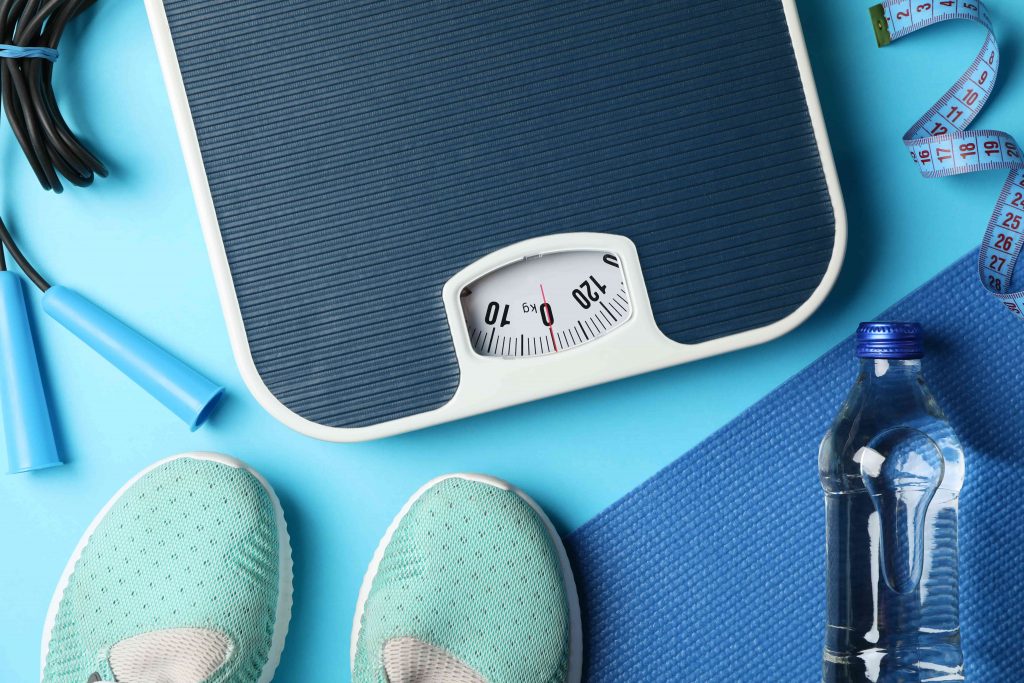Gastric Sleeve vs Gastric Balloon Differences, Pros and Cons
Gastric Sleeve Surgery vs. Gastric Balloon Procedures
What is Gastric Sleeve?
These operations, which are frequently preferred in the field of bariatric surgery, include the reduction of the patient’s stomach in the form of a banana. In this way, it is aimed for the patient to lose weight. These treatments are irreversible, so good decision should be made and good research should be done. On the other hand, it is a very useful method. It allows the patient to lose weight easily.
What Is Gastric Balloon?
Gastric balloon is a treatment method used to lose weight. It is a much easier procedure than the Gastric Tube. These procedures, which do not require any incisions or stitches, can sometimes be used to lose weight to prepare for sleeve gastrectomy surgery and sometimes to lose weight alone. It involves inflating the balloon placed in the stomach with the endoscopic method. When this operation is supported with diet and sports, more weight is lost. On average, it is possible to lose 25% of the current weight.
Although the gastric balloon method has become very popular in recent years, it has been further developed. Smart gastric balloons started to be produced. In this way, patients can take this process even easier, which is already quite easy. Smart gastric balloons involve swallowing and inflating the balloon with water in the doctor’s clinic. This method has started to be preferred more frequently than the traditional balloon method. You can contact us for more detailed information about the smart gastric balloon.
Is Gastric Sleeve a Risky Procedure?
Gastric sleeve contains more risks than gastric balloon. Although it is done using the laparoscopic method, it requires incisions and stitches. This creates the risk of infection. Although the treatment is successful, you may experience some pain. After the treatment, you should pay more attention to your nutrition and get support from a dietitian. As with any surgery, it has risks;
- excessive bleeding
- infection
- Adverse reactions to anesthesia
- blood clots
- Lung or breathing problems
- Leakage from the cut edge of the stomach
- gastrointestinal obstruction
- hernias
- gastroesophageal reflux
- low blood sugar
- not enought feeding
- Vomiting

Is Gastric Balloon a Risky Procedure?
Gastric balloon application is not a risky procedure. It is a much simpler procedure than Gastricseleeve. However, it is normal to experience some nausea immediately after the gastric balloon procedure, this will take an average of 3 days. If it takes longer, contact your doctor. Other than that, very rare and dangerous side effects are;
- Nausea or vomiting that occurs 1 week or more after the operation
- acute pancreatitis
- ulcer
- deflating of the gastric balloon
Who Can Get a Gastric Sleeve?
- Gastric sleeve is suitable for patients who cannot lose weight with adequate exercise and nutrition.
- Patients with a body mass index of 40 and above can easily get a Gastric sleeve.
- Patients must be at least 18 years old.
- Patients with a body mass index of 35 but who have health problems due to their excess weight can also receive gastric sleeve treatment.
Who Can Get a Gastric Balloon?
- Patients’ body mass index should be between 30 and 40.
- Patients must be at least 18 years old.
- Patients should not have had previous gastric or esophageal surgery.
Gastric Sleeve Procedure in Turkey
Gastric sleeve surgery in Turkey is done laparoscopically through a series of quarter- to half-inch incisions in the belly, making it a less invasive procedure than gastric bypass. The gastric sleeve is a one-time procedure that cannot be reversed. In a gastric sleeve procedure, around 75 percent to 80 percent of the stomach is removed, and the remaining sections of the stomach are sewn together to form a banana-shaped sleeve.
Because the sleeve is only around 10% the size of the original stomach, it can only store so much food, and patients won’t be able to eat as much as they could before the treatment. A smaller stomach implies less food storage, but that’s not the only reason for the procedure’s success the portion of the stomach that generates ghrelin (a hormone that increases hunger and encourages fat storage) is eliminated during gastric sleeve surgery. You won’t desire to consume as much food if you have less of this hormone in your bloodstream, and your body will retain less fat.

After Gastric Sleeve Surgery
After sleeve gastrectomy, the patient’s life will change completely. All this must be taken into account. For this reason, everything should be considered and a good decision should be made before deciding on surgery. The gastric sleeve requires dietary changes throughout life.
It requires a diet full of vegetables, fruits and fiber-based foods in the patient’s life. Alcohol or carbohydrate foods should not be consumed. After the operation, the patient should do exercises when he recovers. For all this, it will need a psychologist and dietitian. Since it is a radical decision, it can be difficult for the patient to keep up with all this. In this process, they expect to receive support from their families and friends.
How Much Weight Is Possible To Lose With Gastric Sleeve?
Patients who have adequate diet and nutrition after sleeve gastrectomy lose 25-35% of their body weight within a few months after the first surgery. If you continue to diet and exercise in the future, you will lose 50-70% of weight.
Gastric Balloon Procedure In Turkey
Gastric balloons, also known as intragastric or stomach balloons, are frequently seen as a compromise between medicine and surgery. The capsule is either composed of pig gelatin or a vegetable-based capsule. The balloon is constructed of plastic and is somewhat bigger than a regular vitamin tablet when folded inside the capsule. To get the capsules into your stomach, simply swallow them.
The balloon will be filled and inflated with a nitrogen hexafluoride gas combination once it reaches your stomach, utilizing a flexible tube connected to an inflation system. The balloon will be inflated to a capacity of 250cc, almost the same as a tiny orange. The flexible tube will be removed and carefully taken out of the mouth once the balloon has been inflated. The balloon will go around the stomach since it is free-floating.
After Gastric Balloon Surgery
Gastric balloon is a valid treatment method for 6 or 12 month processes. The process is quite simple. It does not require a radical decision. However, if the patient is determined to lose weight, he should eat healthy and do sports during the gastric balloon period. The fact that this is not a responsibility until the end of his life makes Gastric sleeve and Ballooon two different features.

How Much Weight Is Possible To Lose With Gastric Balloon?
If you get dietitian support after the gastric balloon, it is possible to lose weight quite well. Although this is a result that varies from person to person, it is possible to lose 25% of your body weight only thanks to the gastric balloon. After the gastric balloon, if the patient continues diet and sports, he will continue to lose weight.
Is There Any Result Difference Between Gastric Sleeve and Gastric Balloon?
On the other hand, Gastric sleeve is a radical and permanent decision, while Gastric balloon is a temporary treatment that can be easily removed. While the Gastric balloon is applied to make the patient’s stomach feel full, the Gastric sleeve ensures that the patient is satiated with fewer portions.
Gastric Sleeve Results
Patients who have gastric sleeve surgery lose 60 to 70 percent of their extra weight on average. Approximately 12 to 24 months following surgery, this level of weight loss is generally achieved.
For the first two weeks, most patients lose roughly a pound per day, and weight loss continues after that. Many individuals notice a reversal or considerable improvement in obesity-related illnesses as a result of the significant quantity of excess weight removed.
Gastric Balloon Results
During the first six months, gastric weight loss balloon patients usually lose 10% to 15% of their entire body weight. Patients who got behavioral counseling in addition to the surgery shed around 29% of their extra weight, according to one research. Obesity-related diseases improve as well, but not as much as with gastric sleeve surgery because the weight reduction isn’t always as significant. Because the balloon is removed after six months, the procedure’s long-term outcomes are heavily reliant on lifestyle modifications.

Pros and Cons of Gastric Sleeve Surgery
Pros of Gastric Sleeve
- You can shed up to 65% of your extra body weight using this method.
- Because it is a one-step treatment, the danger of problems is reduced.
- When compared to gastric bypass, the recovery time is shorter.
- There are less problems with mineral and vitamin absorption.
- Dumping syndrome is a rare occurrence.
Cons of Gastric Sleeve
- When compared to gastric bypass, there is less weight reduction.
- Weight loss is more difficult.
- It is irreversible.
- It has the potential to produce acid reflux.
Pros and Cons of Gastric Bypass Surgery
Pros of Gastric Bypass
- Up to 80% of your excess body weight can be lost.
- Bypassing the small intestine, fewer calories are absorbed.
- You lose weight more quickly than if you had gastric sleeve surgery.
- It is possible to reverse the situation, however difficult.
Cons of Gastric Bypass
- Because it’s a two-step procedure, there’s a larger chance of problems.
- Recovery time is lengthier than it is with gastric sleeve surgery.
- Intestinal bypass causes nutrition and vitamin malabsorption, which can lead to deficiency.
- Dumping syndrome is becoming increasingly prevalent.

What Risks Are Involved in Gastric Sleeve vs Gastric Bypass Surgery?
Gastric sleeve surgery in Turkey has a minimal complication risk, but as with any operation, problems do occur, with the majority happening within 30 days after the procedure. Patients may experience an allergic response to the anesthetic, as well as bleeding or a gastrointestinal leak as a result of the staple line. There is a risk of intra-abdominal hemorrhage, blood clots, infection, and heartburn. Malnutrition is also a possibility, as you’ll be eating less calories and may become deficient in vitamin B-12, folate, zinc, and vitamin D if you don’t take the right supplements.
The gastric weight loss balloon treatment in Turkey has a low risk of problems, with the most of them occurring if the balloon is kept in your stomach for more than six months. As your body adjusts to the balloon’s presence, complications such as nausea, vomiting, diarrhea, and stomach discomfort may occur, and the balloon may collapse, but this is uncommon.
Which One is the Best for You?
Several factors influence the sort of bariatric surgery that is best for you (gastric sleeve vs gastric balloon), including:
- Your body mass index
- Your medical background
- Any medical issues you may have
- Your anticipations
Discuss these issues with your doctor to see if bariatric surgery is right for you. You and your doctor can determine if one form of surgery is best for you. Contact us to get all inclusive weight loss surgeries in Turkey at the most affordable prices and get information about procedures.






